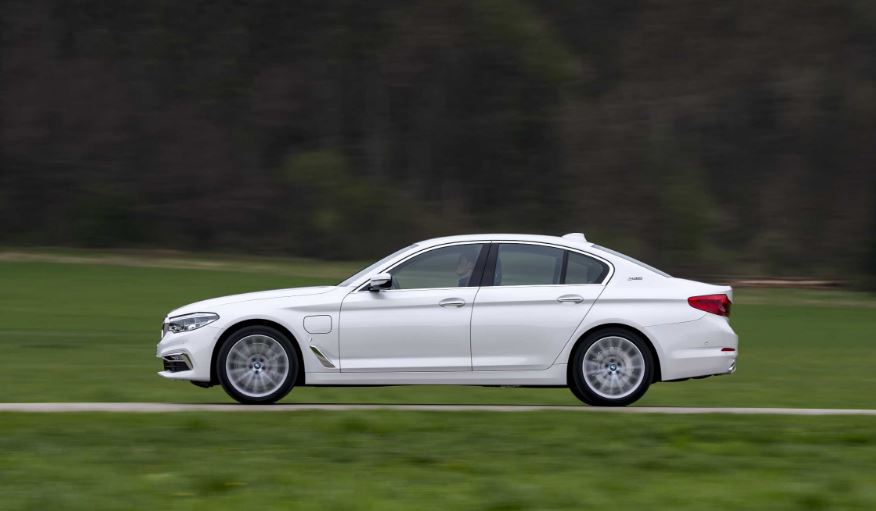The China Factor: Analyzing Market Headwinds For BMW, Porsche, And Other Automakers

Table of Contents
Intensifying Domestic Competition
The Chinese automotive market is experiencing a dramatic shift in power dynamics. The rise of domestic brands and increased market saturation are creating significant challenges for international players.
Rise of Chinese EV Brands
The rapid ascent of domestic electric vehicle (EV) manufacturers like BYD, NIO, and Xpeng is undeniably disrupting the established order. These brands are not simply competing; they are aggressively challenging the dominance of international luxury brands.
- Aggressive pricing strategies: Chinese EV brands often undercut luxury brands, making electric vehicles more accessible to a wider range of Chinese consumers. This price competitiveness is a significant hurdle for established players accustomed to higher profit margins.
- Deep understanding of local preferences: Chinese EV brands possess an intimate understanding of local consumer preferences, tailoring their vehicles and marketing strategies to resonate effectively within the domestic market. This localized approach gives them a significant advantage.
- Government support and subsidies: The Chinese government actively supports the development and adoption of domestic EVs through generous subsidies and favorable policies. This direct governmental backing provides a considerable competitive edge.
Increased Market Saturation
The sheer size of the Chinese automotive market is undeniable, but it's also becoming increasingly saturated. This saturation leads to fiercer competition, price wars, and reduced profitability for all players.
- Increased competition for market share: More brands are vying for the same pool of consumers, creating a highly competitive environment where differentiation is paramount.
- Profit margin erosion: Price wars, a common outcome of increased competition, are eroding profit margins, forcing companies to re-evaluate their pricing and operational strategies.
- Higher marketing and advertising costs: Standing out in a crowded marketplace requires significantly higher investments in marketing and advertising, further impacting profitability.
Shifting Consumer Preferences and Demands
Chinese consumer preferences are evolving rapidly, placing new demands on international automakers. Understanding and adapting to these changes is crucial for long-term success.
Preference for EVs and Hybrids
The Chinese consumer is embracing electric and hybrid vehicles at an unprecedented rate. This shift is driven by several factors:
- Government incentives: Substantial government incentives for EV adoption are accelerating the transition to electric mobility.
- Growing environmental awareness: Increasing awareness of environmental concerns is fueling the demand for eco-friendly vehicles.
- Technological advancements: Continuous technological advancements are making EVs more attractive in terms of performance, range, and charging infrastructure.
Focus on Technology and Connectivity
Chinese consumers highly value advanced technological features and seamless connectivity. This focus necessitates significant investment in technology and software development.
- Demand for Advanced Driver-Assistance Systems (ADAS): Features like lane-keeping assist, adaptive cruise control, and autonomous parking are highly sought after.
- Preference for intuitive infotainment: User-friendly and sophisticated infotainment systems are crucial for attracting tech-savvy Chinese consumers.
- Integration of digital services and connectivity: Seamless integration of digital services, such as navigation, entertainment, and vehicle management apps, is increasingly important.
Navigating Regulatory Hurdles and Geopolitical Risks
The Chinese automotive market is subject to stringent regulations and geopolitical uncertainties that present significant challenges for international automakers.
Stringent Emission Standards and Regulations
China's increasingly strict emission regulations and safety standards require substantial investments in research and development (R&D) and compliance measures.
- Meeting stringent fuel efficiency targets: Automakers must invest heavily in developing more fuel-efficient vehicles to meet increasingly demanding targets.
- Adapting to evolving emission regulations: The regulatory landscape is constantly evolving, necessitating ongoing adaptation and investment.
- Investing in compliant technologies: Meeting these standards requires significant investment in new technologies and manufacturing processes.
Geopolitical Uncertainty
Trade tensions and geopolitical uncertainties between China and other countries create unpredictable market conditions and disrupt supply chains.
- Trade wars and tariffs: Trade wars and tariffs can significantly impact import costs and overall profitability.
- Supply chain disruptions: Geopolitical instability can lead to disruptions in the supply chain, impacting production and delivery times.
- Regulatory environment uncertainty: Unpredictable changes in the regulatory environment add to the complexity and risk associated with operating in the Chinese market.
Conclusion
The "China Factor" presents a complex and dynamic set of challenges for BMW, Porsche, and other international automakers. Successfully navigating this market requires a deep understanding of consumer preferences, rapid technological adaptation, and proactive responses to regulatory changes. Ignoring these headwinds will severely impact profitability and long-term success. To remain competitive, automakers must prioritize innovation, localization, and strategic partnerships to effectively address the multifaceted China Factor and secure their position in this crucial market. Mastering the complexities of the China Factor is paramount for future success in this pivotal automotive market.

Featured Posts
-
 How Cody Bellinger Protects Aaron Judge In The Yankees Lineup
May 12, 2025
How Cody Bellinger Protects Aaron Judge In The Yankees Lineup
May 12, 2025 -
 Analyzing Aaron Judges Performance Key Metrics For Yankees In 2025
May 12, 2025
Analyzing Aaron Judges Performance Key Metrics For Yankees In 2025
May 12, 2025 -
 Patricky Freire Targets Jose Aldo A Bellator Champions Next Challenge
May 12, 2025
Patricky Freire Targets Jose Aldo A Bellator Champions Next Challenge
May 12, 2025 -
 Did Sylvester Stallone Ever Direct A Film Without Starring The Story Behind The Flop
May 12, 2025
Did Sylvester Stallone Ever Direct A Film Without Starring The Story Behind The Flop
May 12, 2025 -
 The Power Of Friendship Shane Lowry And Rory Mc Ilroy
May 12, 2025
The Power Of Friendship Shane Lowry And Rory Mc Ilroy
May 12, 2025
Latest Posts
-
 Efl Greatest Games A Definitive Ranking
May 13, 2025
Efl Greatest Games A Definitive Ranking
May 13, 2025 -
 Lids Una Ted I Barnli Praznuvanje Po Plasmanot Vo Premier Ligata
May 13, 2025
Lids Una Ted I Barnli Praznuvanje Po Plasmanot Vo Premier Ligata
May 13, 2025 -
 Triumf Lids Una Ted I Barnli Vo Premier Ligata
May 13, 2025
Triumf Lids Una Ted I Barnli Vo Premier Ligata
May 13, 2025 -
 Povratok Vo Premier Ligata Za Lids I Barnli
May 13, 2025
Povratok Vo Premier Ligata Za Lids I Barnli
May 13, 2025 -
 Lids I Barnli Obezbedi A Mesto Vo Premier Ligata
May 13, 2025
Lids I Barnli Obezbedi A Mesto Vo Premier Ligata
May 13, 2025
